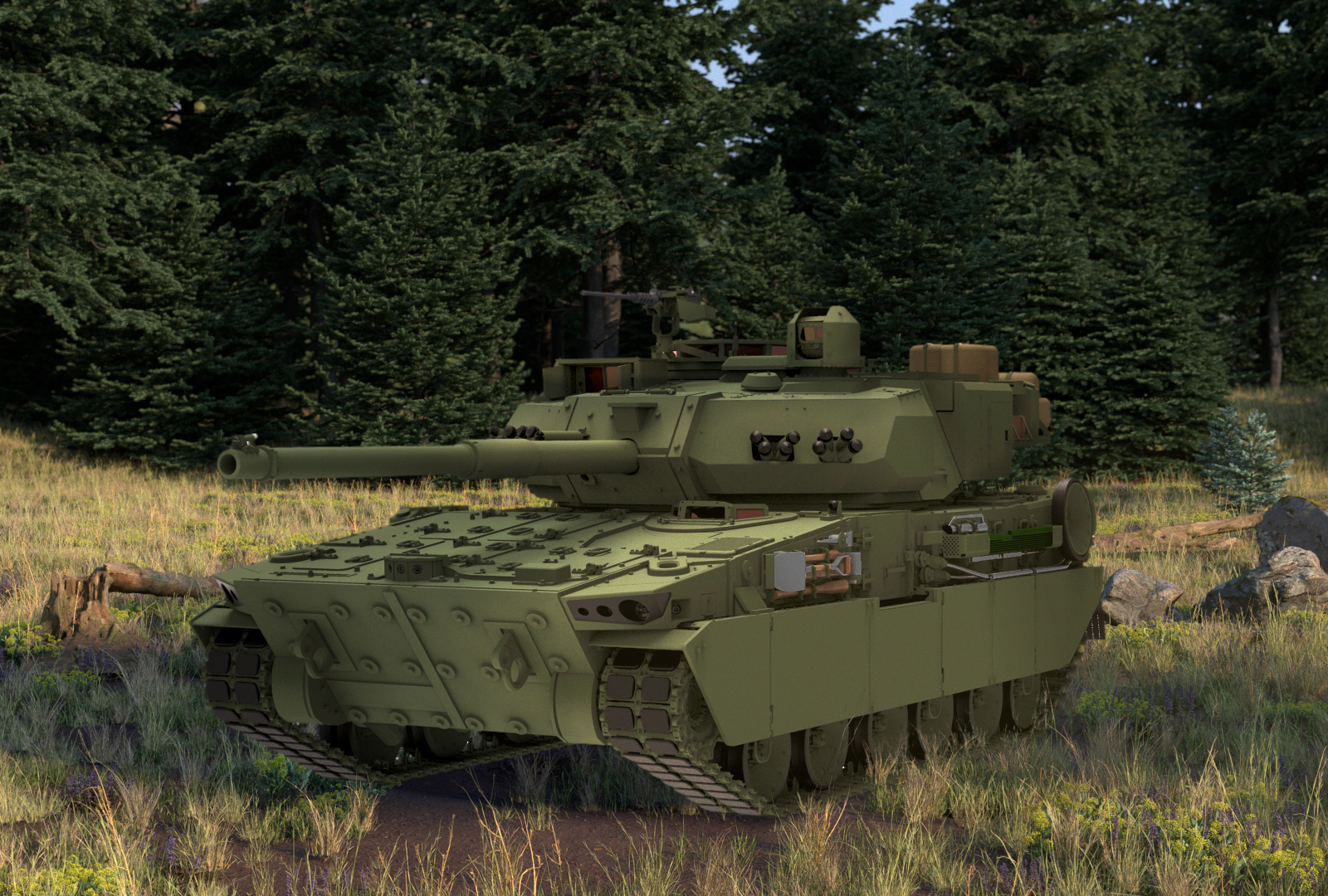

When it comes to crossing rivers on bridges, all the technology of modern warfare is still bound by the hard limits imposed by the laws of physics—the structure needs to be able to support the vehicle that’s on it. To try to cope with this problem, the Army is investing in a lighter tank than its current battlefield behemoth, the M1 Abrams main battle tank. This new vehicle, which is still known by its descriptive moniker Mobile Protected Firepower, was promoted at the Association of the United States Army conference held in Washington, DC, from October 10-12.
The Mobile Protected Firepower (MPF) vehicle weighs in at 38 tons, which is heavy by all standards, except it is light compared to the 70 tons of heft of an Abrams tank. That means it can go places the Abrams can’t, expanding how and where the Army can effectively fight war from vehicles. The MPF will also feature fire control and situational awareness sensors, which can allow enemy location data to be shared across vehicles in formation.
“Bridge classifications being what they are, you know right away whether that bridge can support the weight of a mobile protected firefighter vehicle, or it can’t,” says Tim Reese, the director of US business development for General Dynamics, the company that makes both the Abrams and MPF. “Same thing with the Abrams tank, which requires a much more robust bridge to cross than does the MPF.”
The MPF is designed to accompany Infantry Brigade Combat Teams, which are intended primarily for travel on foot. These formations, which consist of between 3,900 to 4,100 people, incorporate some vehicles, but are distinguished from Armored and Stryker Brigade Combat Teams, which use roughly heavy and medium-armored vehicles to transport soldiers and weapons around the battlefield.
“It’s designed to help dismounted units when they get into a spot where they cannot maneuver and accomplish their mission because of a threat that is greater than the weapons systems they carry with them on their backs,” says Reese. “Because of [the MPF’s] mobility, it can rapidly move around the battlefield and can be very quickly on call to [assist] that infantry element.”
“You don’t have to wait for higher coordination for an air asset. You don’t have to try to coordinate helicopters or anything like that,” he adds.
While Armored and Stryker brigades bristle with heavy weaponry, Infantry brigades are constrained to gear that fits on soldiers’ backs and what can be mounted on vehicles that keep up with infantry over rough terrain, like urban rubble or soft soil. The soldiers on the ground are generally referred to as “dismounts.”
“If they get to any kind of [enemy] fortified bunker situation, or light and light-armored vehicles, that’s something that would hamper the dismounts currently, but [those are threats] that the MPF vehicle’s protected large caliber direct fire power can easily defeat,” says Kevin Vernagus, General Dynamics program director for the MPF.
The Infantry Brigade Combat Teams, unlike the heavier brigades, can be deployed by aircraft, letting the formation move into action after disembarking from transport planes and helicopters.
“It has to be able to roll off and be able to fight upon roll off,” says Vernagus. “We had to make sure it does everything it needs to do coming out of that aircraft.”
That meant keeping the weight within the bounds of what a C-17 cargo transport plane can deliver. It’s not a tradeoff made lightly: the armor on a combat vehicle is vital for survival, so to lighten the load without compromising protection, General Dynamics says it looked to other parts of design where it could incorporate durable but lighter components.
“Talking about the armor protection obviously is something we can’t really do,” said Reese, “but a more mundane one is the road wheels. They’re the same size as [on] a Bradley vehicle, but they weigh a lot less because they’re made out of a high-strength aluminum.”
Should the Army decide the MPF needs more and heavier armor in the future, the vehicle’s frame is designed to accommodate it.
“We have add-on armor on the sides and the belly plate on the bottom which would allow us in the future, as threats evolve or new materials become available, you simply can take off one set of armor and put on new material or thicker or thinner armor as necessary,” says Vernagus. This system also includes hooks for additional defenses, like active protection systems that explode into incoming anti-tank missiles, mitigating their impact.
To make sure that new tank crews can adapt to the MPFs as they’re delivered, the tank has the same one-in-the-body, three-in-the-turret crew configuration as an Abrams, though the turret itself is situated further back. That’s because, unlike the Abrams or the Patton tanks which preceded it, the engine and transmission of the MPF is mounted in the front. The MPF’s interior look, feel, and controls are designed to closely match that of an Abrams.
The design beat out a competing model by BAE in trials before the Army selected General Dynamics to make the MPF in June. The designers adapted to feedback from soldiers during testing.
“The side skirts that cover over the track in the first phase of the program, we had those as bolt-on,” says Vernagus. “And so anytime the soldiers had to do maintenance to the track or adjust anything, they had to take off these bolts in this big heavy armor piece. What we’ve done now for this next phase of the program is put on hinges, so those skirts actually open sideways and they can get right to what they need to without having to take off a heavy armor piece.”
Deliveries for the production run MPF, which still lacks a proper, non-acronym-based name, are scheduled to begin by the end of fiscal year 2023.
